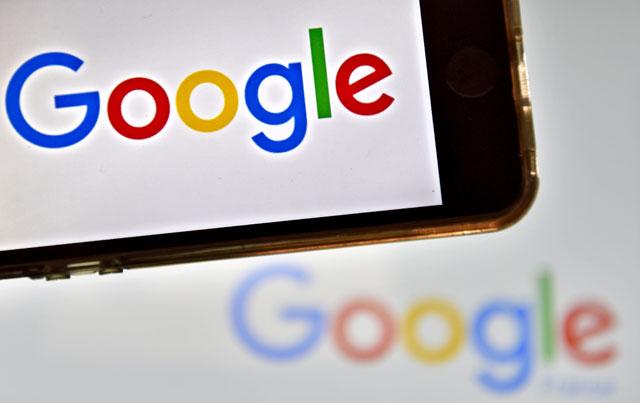You are here
Free news gets scarcer as paywalls tighten
By AFP - Mar 08,2018 - Last updated at Mar 08,2018

Photo courtesy of digitaltrends.com
WASHINGTON — For those looking for free news online, the search is becoming harder.
Tougher restrictions on online content have boosted digital paid subscriptions at many news organisations, amid a growing trend keeping content behind a “paywall”.
Free news has by no means disappeared, but recent moves by media groups and Facebook and Google supporting paid subscriptions is forcing free-riders to scramble.
For some analysts, the trend reflects a normalisation of a situation that has existed since the early internet days that enabled consumers to get accustomed to the notion of free online content.
“I think there is a definite trend for people to start paying for at least one news source,” said Rebecca Lieb, an analyst who follows digital media for Kaleido Insights.
Lieb said consumers have become more amenable to paying for digital services and that investigative reporting on politics in Washington and elsewhere has made consumers aware of the value of journalism.
A study last year by the Media Insight Project found 53 per cent of Americans have paid for at least one news subscription. A separate report by Oxford University’s Reuters Institute found two-thirds of European newspapers used a pay model.
“Services like Netflix and Spotify have helped people get into the habit of paying for digital content they used to get for free,” said Damian Radcliffe, a journalism professor at the University of Oregon and a fellow at the Tow Centre for Digital Journalism.
“People recognise that if you value journalism, especially in the current political climate, you need to pay for it.”
Making the transition
Newspapers seeking to make a transition from print to digital have found it difficult to replace the advertising revenues that were long the staple of the publications.
News organisations are unable to compete against giants like Google and Facebook for digital advertising, and are turning increasingly to readers.
“For large-scale news organisations whether they are national or regional, that want to have a large reporting staff, reader revenue needs to be the number one source,” said Ken Doctor, a media analyst and consultant who writes the Newsonomics blog.
Doctor said some news organisations are getting close to 50 per cent of revenues from subscriptions and sees that rising to as much as 70 per cent.
The New York Times reported the number of paid subscribers grew to 2.6 million and that subscriptions accounted for 60 per cent of 2017 revenues. The Washington Post last year touted it had more than one million paid digital readers.
Not surprisingly, the Times and Post have both tightened their online paywalls by limiting the number of free articles available. Similar moves have been made at The Boston Globe, Los Angeles Times and elsewhere.
Magazines such as Conde Nast’s Wired and The New Yorker also introduced new online pay models that limit free content.
The Atlantic, a media group bolstered by an investment from Laurene Powell Jobs, said this month it is experimenting with various subscription models as it expands.
Ad blockers used by some consumers have caused deeper revenue woes for online news.
One site, Salon.com, told its readers that if they used ad blockers, their computers would be used to mine cryptocurrency to offset the lost ad revenues.
While well-known national publications may be able to navigate digital pay models, it will be harder for smaller, regional and local news organisations on slimmer budgets, said Radcliffe.
“Smaller local organisations might find it harder to make their case to readers [to pay], and they have a smaller pool of customers,” Radcliffe said.
Facebook and Google recently agreed to help support paywalls for news organisations on their platforms and Apple agreed to waive its commission for subscription sign-ups from the big social network on its devices, according to Facebook’s Campbell Brown.
These moves could be positive for news organisations after years of tensions with online platforms, according to Lieb.
“This means [online platforms] are trying to work for instead of passively against publishers,” Lieb said.
“This is important because search and social are the way people discover news in the digital age.”
Walls keep people out
According to a study by Digital Content Next — formerly known as the Online Publishers Association — news organisations only got around 5 per cent of their digital revenues from the dominant online platforms but accounted for close to 30 per cent of the content viewed.
The paywall trend may have some other consequences by limiting national “conversations” based on shared news.
“Content that is behind a paywall does not go viral,” Lieb said, but noted that important news scoops can still spark national discussion.
Strict paywalls may also lead to a greater “digital divide” with a segment of the population having access to high-quality news, analysts note.
“From a journalist’s perspective, the big game is to be important to the community,” said Rick Edmonds, a media business analyst at the Poynter Institute.
Radcliffe said that with more news behind a paywall, “some people might not be able to access important content. There is a risk those audiences don’t get access to the range of information and journalism they need to stay informed in the current era”.
Related Articles
WASHINGTON — Paywalls were supposed to help rescue newspapers from the crisis of sinking print circulation as readers shifted to getting the
NEW YORK — Reuters News said on Thursday it will start charging for access to its website as part of a new digital subscription strategy des
WASHINGTON — Google announced new steps to help struggling news organisations on Monday — including an end to a longstanding “first click fr













